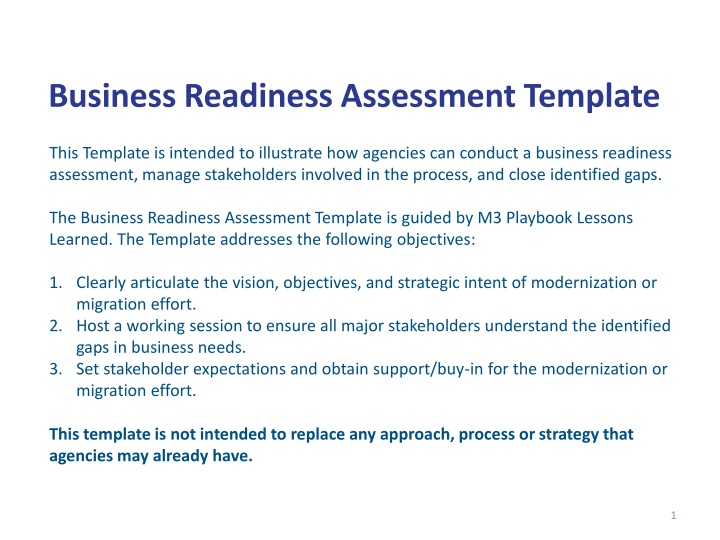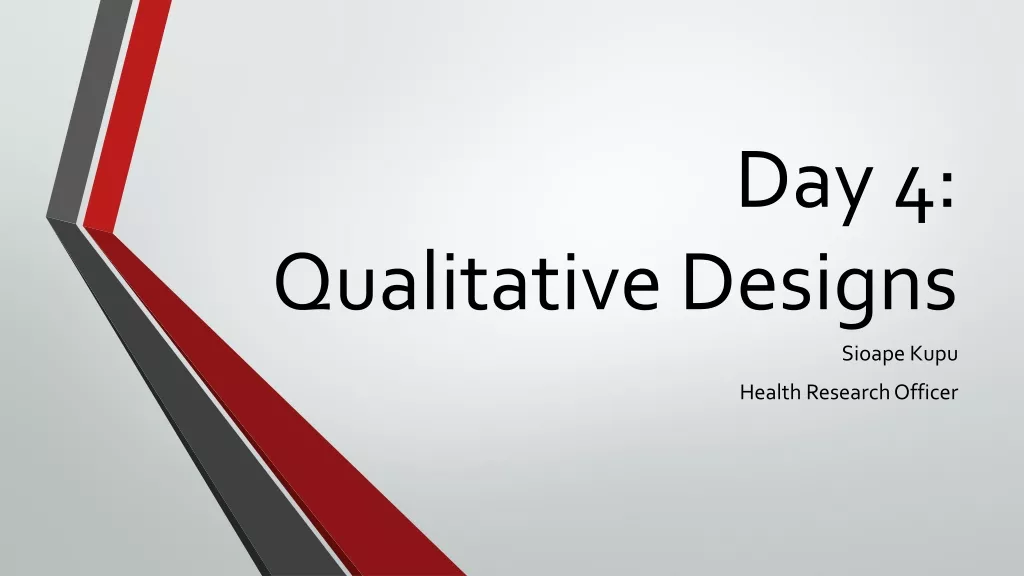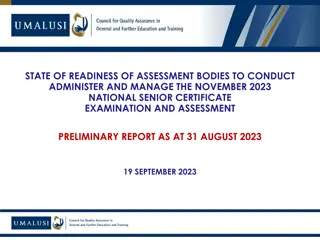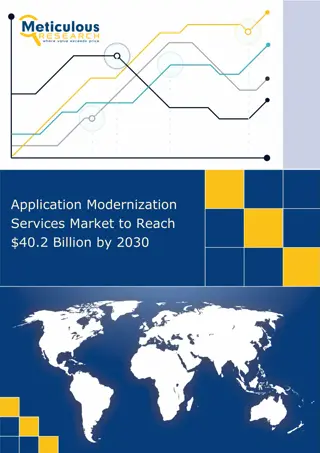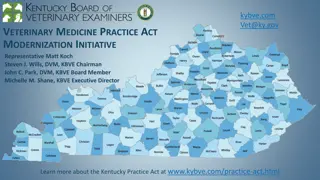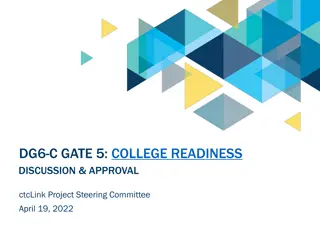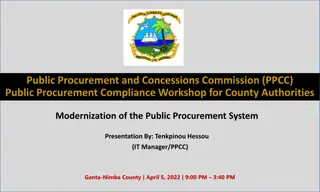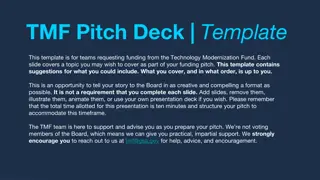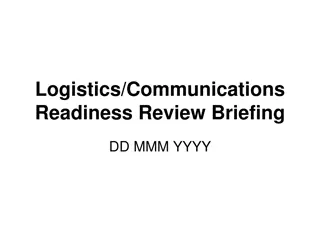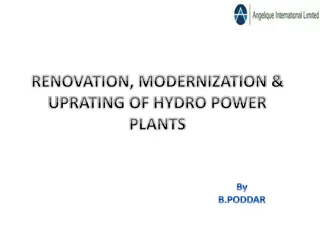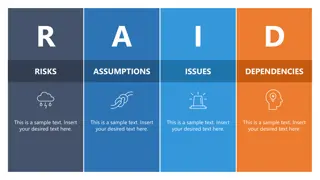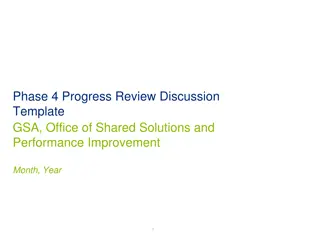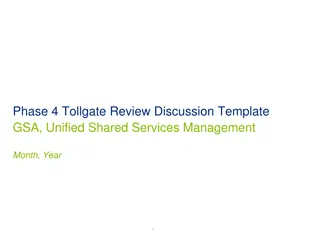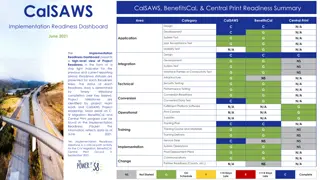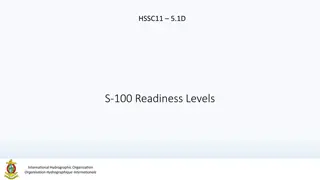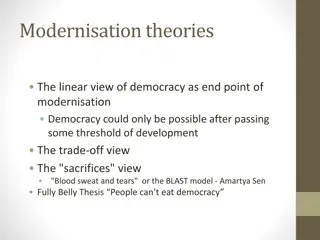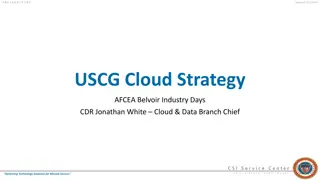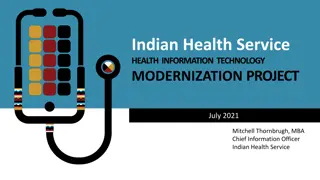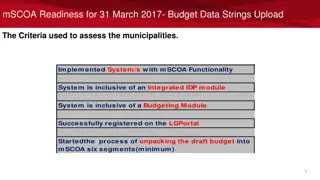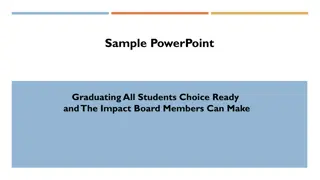Business Readiness Assessment Template for Modernization Efforts
This template guides agencies in conducting a business readiness assessment, managing stakeholders, and closing identified gaps for modernization or migration efforts. It covers objectives such as articulating vision, hosting working sessions, and setting stakeholder expectations. The template, complemented by the M3 Playbook, assists in assessing existing solutions, defining target end states, and identifying business need gaps. Stakeholders, roles and responsibilities, and activities for the assessment process are outlined to ensure a systematic approach towards achieving business readiness.
Download Presentation

Please find below an Image/Link to download the presentation.
The content on the website is provided AS IS for your information and personal use only. It may not be sold, licensed, or shared on other websites without obtaining consent from the author.If you encounter any issues during the download, it is possible that the publisher has removed the file from their server.
You are allowed to download the files provided on this website for personal or commercial use, subject to the condition that they are used lawfully. All files are the property of their respective owners.
The content on the website is provided AS IS for your information and personal use only. It may not be sold, licensed, or shared on other websites without obtaining consent from the author.
E N D
Presentation Transcript
Business Readiness Assessment Template This Template is intended to illustrate how agencies can conduct a business readiness assessment, manage stakeholders involved in the process, and close identified gaps. The Business Readiness Assessment Template is guided by M3 Playbook Lessons Learned. The Template addresses the following objectives: 1. Clearly articulate the vision, objectives, and strategic intent of modernization or migration effort. 2. Host a working session to ensure all major stakeholders understand the identified gaps in business needs. 3. Set stakeholder expectations and obtain support/buy-in for the modernization or migration effort. This template is not intended to replace any approach, process or strategy that agencies may already have. 1
Directions This template accompanies the M3 Playbook and is intended to help customers assess their existing solution, define a target operational end state, and identify business need gaps. This template should be referenced throughout Phase 1 and ultimately help customers select a provider that will best meet their business needs. Purpose A better understanding of the agency s existing solution. A defined target operational end state. Documented gaps in business needs and proposed resolutions to close identified business need gaps. ExpectedOutcomes Customers should complete this template in order, with the necessary stakeholders, to accurately capture the business needs of your migration or modernization effort. Instructions Contents Slide # An overview of the Business Readiness Assessment Process(Three Phase: Assess the Existing Solution, Define Target End State, Gap Analysis) Step 1: Establish Roles and Responsibilities Step 2: Assess the Existing Solution Step 3: Define Target End State Step 4: Gap Analysis 3 4 5 6 8 2
Business Readiness Assessment Process Directions: This is the standard process for completing a Business Readiness Assessment. The listed stakeholders and activities are not exhaustive and should be tailored to your specific agency and effort. Define Target End State Assess Existing Solution Gap Analysis Stakeholders Executive Sponsor (C) Business Owner (C) Review shared vision and objectives of modernization or migration from Phase 0 Executive Sponsor (C) Organizational Executives (CXOs) (C) Program Manager (C) PMO Lead, if on-boarded Business Owner (C) Define the target operational end state Executive Sponsor (C) Organizational Executives (CXOs) (C) Program Manager (C) PMO Lead, if on-boarded Business Owner (C) Identify the gaps in business needs between the existing solution and target end state Organizational Executives (CXOs) (C) Program Manager (C) PMO Lead, if on-boarded Activities/Outcomes Draft desired high-level business capabilities of a target end state while referencing the Federal Integrated Business Framework (FIBF) standards Document the as is high-level capabilities and offerings of the existing solution Assess current capabilities against the FIBF standards to identify additional gaps Identify the limitations and challenges of the existing solution Identify possible resolutions to close/mitigate identified business need gaps 3
Step 1: Establish Roles and Responsibilities Directions: Develop a list of stakeholders, establish roles and responsibilities, and create a timeline to complete each phase of the Business Readiness Assessment process. Assess the Existing Solution Define Target End State Gap Analysis Stakeholders: Develop a list of stakeholders Stakeholders: Develop a list of stakeholders Stakeholders: Develop a list of stakeholders Roles: Define roles Roles: Define roles Roles: Define roles Responsibilities: Define responsibilities Responsibilities: Define responsibilities Responsibilities: Define responsibilities Timeline: Create a timeline for completion Timeline: Create a timeline for completion Timeline: Create a timeline for completion 4
Step 2: Assess the Existing Solution Directions: Complete the table below to accurately and effectively assess the existing solution. Each stakeholder identified in step 1 should directly contribute to this effort. Document the As-Is High- level Capabilities and Offerings of the Existing Solution Document high-level capabilities and offerings here Review Shared Vision and Objectives of Modernization or Migration from Phase 0 Identify the Limitations and Challenges of the Existing Solution Document shared vision and objectives here Document limitations and challenges here 5
Step 3: Define Target End State Directions: Complete the table below to accurately and effectively define a target operational end state. Each stakeholder identified in step 1 should directly contribute to this effort. Draft desired high-level business capabilities of a target end state while referencing the FIBF standards Document desired high-level business capabilities of target end state here Define the Target Operational End State Document target operational end state here 6
Step 3: Guiding Principles for Target End State Directions: Establish your effort s guiding principles. We Will Which Means Document guiding principles here Document impacts of guiding principles here 7
Step 4: Gap Analysis Directions: Complete the table below to accurately and effectively perform a high-level gap analysis. Each stakeholder identified in step 1 should directly contribute to this effort. A gap is defined as any desired business need that is not met by the solution currently in place. Identify the Gaps in Business Needs between the existing Solution and Target End State Document target operational end state here Assess current capabilities against the FIBF standards to identify additional gaps Document current capabilities against the FIBF standards here Brainstorm Possible Resolutions to Close Identified Business Need Gaps Document possible gap resolutions here Document impacts to consider here 8
